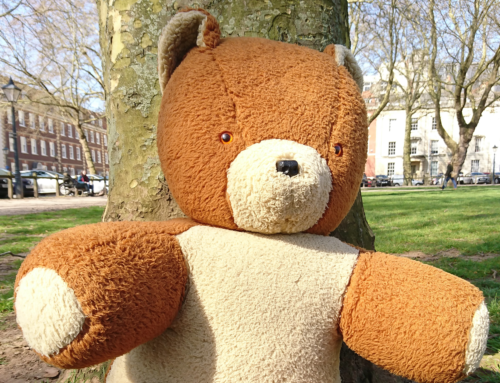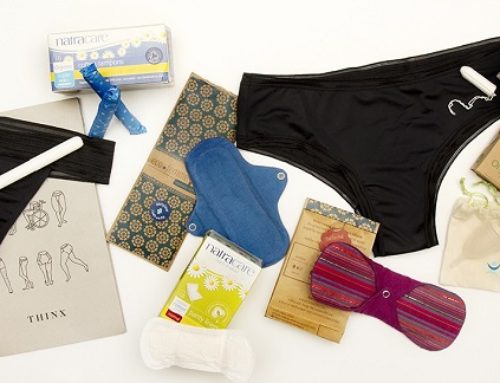by Hattie Parke
7 minute readOn a recent trip to Kenya, my interest was caught by the ‘mitumba’ (Swahili for ‘second-hand clothing’) stalls. You find them clustered in the vivid, bustling and dust-filled markets at the centre of each town, and even dotted along residential streets. There was a strange dissonance between the unfamiliar surroundings and the rows of branded t-shirts and shoes, just like you might find in any clothing store in Bristol, festooning the stalls.
Indeed, some of items I saw hanging there could very easily have previously been worn by people in the UK, and I found myself thinking of the journey these clothes had taken to become mitumba. The markets seemed very popular, an integral part of everyday life – but I had also read that there was growing interest on the part of African governments to ban imports of second-hand clothing and shoes.
Clothes hamper?
On the face of it, mitumba is a win-win. It provides an outlet for discarded clothing from the West, enabling it to be reused rather than recycled or downcycled; and it offers access to cheap clothing for people who need it. However, there is an apparent tension here between environmental good (clothing reuse) and an economic harm, with cheap second-hand imports accused of hampering the growth of domestic clothing manufacturing – hence governmental interest in a ban.

Stalled economy: is the popularity of mitumba stalls holding back local industry? Photo used by permission..
Each player in this global supply chain stands to be affected in a different way by a potential ban: western clothing donors, western recycling businesses, second-hand clothing retailers, and would-be clothing manufacturers in Africa, not to mention the local clothes-buying. What would a ban mean for all of these competing interests, and is it a sensible approach?
Breakdown of communiques
The possibility of a ban on second-hand clothing was first raised by the East Africa Community (EAC), comprising Kenya, Tanzania, Uganda, Burundi and Rwanda, in February 2015. A joint communique from the Heads of State requested the council of ministers to study the possibilities for the promotion of domestic textile industries and the prevention of imports of used clothes. The response from the Council of Ministers came in a policy report with a number of recommendations, including a proposal for a 3-year plan to phase out of used clothing imports. Then in March 2016, the EAC Heads of State issued a subsequent Joint Communique from the 17th Ordinary Summit, expressing their intent to eliminate importation of used clothing as a means to support the region’s textile industry.
What has been implemented since has not (yet) amounted to a ban but there has been an increase in the Common External Tariff (CET) rate for worn clothing. It has risen from USD 0.20/kg to either USD 0.40/kg or 35% of the declared value of the goods, whichever is higher, with Rwanda applying an even higher tariff rate of USD 2.50/kg. Kenya has since declined to implement the higher tariffs for fear of losing the benefits of duty-free trade with the US under the African Growth and Opportunities Act (AGOA).
Though some imports continue, it is now more difficult for ‘western’ countries, including the UK, to access what has been a key outlet for used clothing since the 1980s. From an environmentally and socially conscious UK consumer’s perspective, the thought of serviceable clothes getting a second life in Africa certainly seems preferable to them ending up in the residual stream, or being downcycled into rags. Recycling businesses have also been keen to highlight the environmental benefits of sending items for re-use. The American Secondary Materials and Recycled Textiles Association (SMART) successfully lobbied the US government to take action over the potential ban. This response from SMART is unsurprising as the EAC forms a key market for their product, accounting for 12.5% of global imports of used clothing.
Restrictive clothing
In reality, in the short-term clothes recycling businesses may respond to the tariffs by flexing their prices downward, although this can only go so far before it becomes economically unviable. There is little indication that this has been necessary to date: Let’s Recycle reports that “Despite currency and demand fluctuations in overseas markets, demand for used clothing from the UK has remained generally good”. Perhaps, mirroring the reaction of the secondary materials markets to China’s recent recycling restrictions, textile exporters have reduced their reliance on the EAC and expanded into other second-hand clothing markets, such as India and Malaysia. However, just as China’s recycling restrictions have led some to question the reliance on export markets for reprocessing, disruption to the global used clothing market might provoke debate over whether second-hand clothes can be managed closer to home. Better still, could it incentivise a move away from disposable fashion, thereby reducing the need to find second-hand markets at all.
Having considered the impact of bans from the producers’ end, what does it mean for the people and markets in the EAC? It is estimated that two-thirds of the population buy used clothing, as a means for low-income households to accessing good quality clothes at a cheap price. If the removal of the second-hand clothing supply led to an increase in prices, it would impact a large proportion of consumers. Furthermore, the complex redistribution supply chains within the EAC, whereby used clothes trickle down from importers to local markets and consumers, sustains a great many jobs. Estimates for Kenya alone suggest that used clothing sustains 121,000 direct and 27,000 indirect jobs within a working age population of some 27 million.

There’s no business like shoe business. Can domestic industries replace cheap second-hand imports? Photo used by permission.
The EAC’s goal in looking to phase out second-hand clothing is clearly to promote the development of domestic textile industry, and thus stimulate the domestic economy and drive job growth. Given that the EAC countries rank amongst the lowest GDP per capita in the world, these are reasonable goals; developing countries have generally struggled to move beyond primary industries and establish their own much-needed manufacturing base to extract more of the value of their resources. Two of the standard reasons for protectionism are to nurture industries that a country is seeking to establish, and to restrict “dumping” of under-priced imports onto the market, and the argument that the saturation of the market with low cost alternatives undermines domestic industry seems plausible.
Dressed for success?
But will the phasing out of second-hand clothing imports be effective in delivering development? The situation is complex, affecting numerous players across the supply chain in ways that are difficult to predict: possible losses in the used clothing sector must be weighed against the potential gains elsewhere. Of course, even if the mitumba trade is greatly diminished by bans or tariffs not all of the mitumba jobs will disappear. The majority of employment is in the sale of used clothes at local markets, and similar roles are likely to exist, whether people are buying used or new clothing.
The big question is whether the EAC measures will in fact stimulate the domestic textiles industry. Even if you believe tariffs can help provide space for an industry to develop, the EAC’s approach has a critical flaw: tariffs apply only to second-hand clothing. China has increasing influence in the region, and is a potential source of cheap, brand new clothing. There is a real risk that Chinese exports, rather than nascent local manufacturers, could be the beneficiaries of the EAC’s actions.
Of course, this could be addressed by expanding the restrictions to apply to new and used clothing equally – but that might carry greater risks of trade retaliation. Another consideration is whether a gradual imposition of restrictions, rather than a step change, might allow time for the development of domestic production infrastructure and capacity, and to provide all those who currently rely on EAC’s second hand clothes system with more opportunity to adapt.
The EAC’s actions to date, however, should be a reminder to westerners of the need to consider the implications of our ‘throw-away’ culture. Our attempts to be socially and environmentally responsible within that culture can backfire. Giving away our unwanted clothes to support good causes and providing people with a cheap alternative to buying new may place us on the upper rungs of Lansink’s Ladder; but we need to ensure that our efforts don’t amount to dumping our problems on the developing world. There’s more that can and should be done – not least, focusing on reducing the amount of waste clothing we produce – to make our practices truly sustainable.







Hi sir i am entrested used clothes business